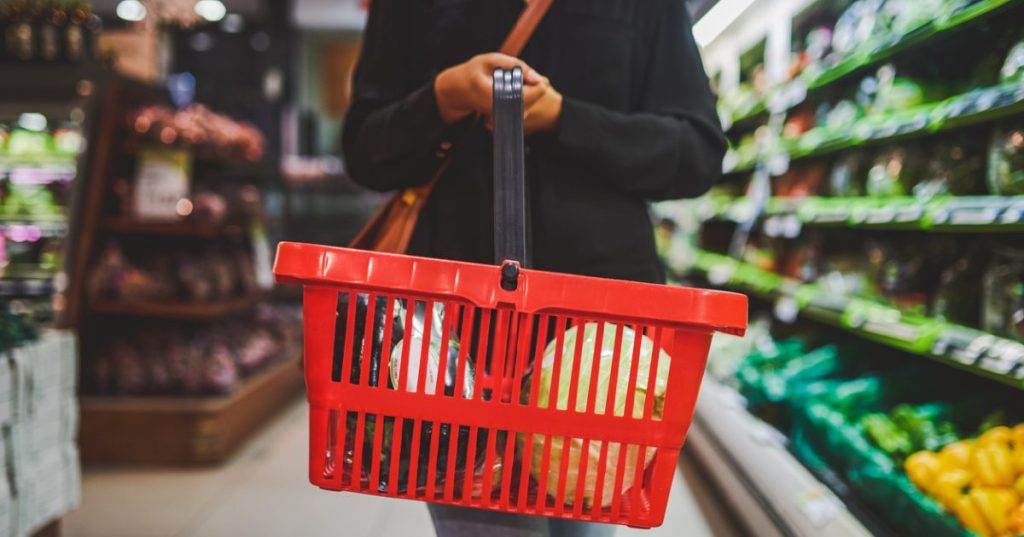It’s no secret at this point that all retail stores, most restaurants, and pretty much anywhere you spend money has spent time and money doing research that helps them convince you to spend more of yours.
Don’t be fooled, y’all – you’re being subtly manipulated absolutely everywhere you go.
Here are 14 ways your local grocery store is convincing you to stay longer and spend more money – just read on and see if I’m not right!
14. Those mini-multi packs.
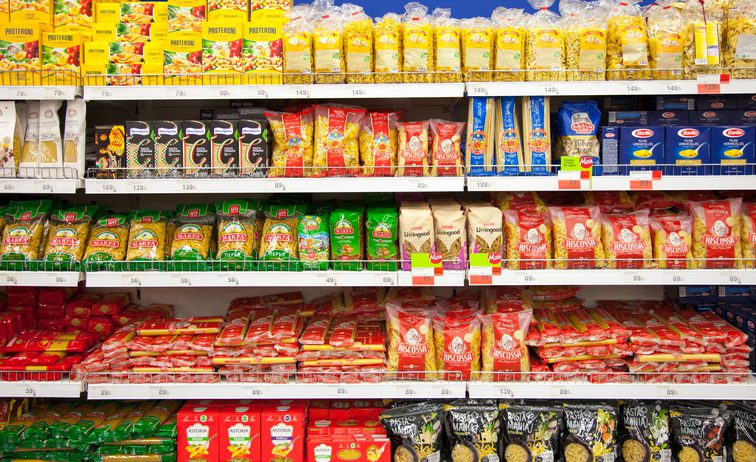
Image Credit: iStock
Individually wrapped snacks, smaller bottle or can sizes, and the like can be very tempting if you’re someone who packs lunches every day.
Not only are they more expensive per item, but you also tend to run out of them more quickly and have to return to the store.
13. Misting the produce.

Image Credit: iStock
If you, like me, thought that the mist was there to keep the fruit and vegetables fresh, think again – it actually makes them spoil faster.
In the meantime, though, it gives them that dewy, just-picked look that makes you jones to put them into your cart.
12. Your kid’s favorites are down low.

Image Credit: iStock
Macaroni and cheese, Pop Tarts, fruit snacks, you name it – the things your kids want are just where they can see them.
The stores are betting that you’ll be too frazzled to say no a million times and just put it in your cart.
11. Putting the meat and dairy at the back of the store.
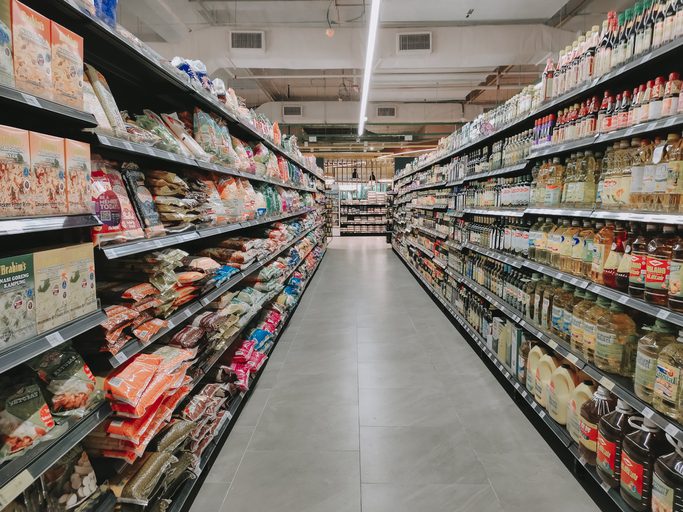
Image Credit: iStock
If you have to wander past the chips and soda and cereal et al before you land at the part of the store you actually meant to visit the whole time, chances are you’re going to pick at least one thing up.
You know it’s true.
10. They make generic brands hard to find.

Image Credit: iStock
Store brands, bulk items, and generic products also go on the bottom shelf.
The reason is that their packaging is less likely to catch your eye, and also because the store doesn’t want to point you toward the cheapest items if they can help it.
Anything they want you to buy will usually be at eye-level.
9. Giving you the staples at a discount.

Image Credit: iStock
If people know that a store has great prices on things like bread, milk, and eggs they’re more likely to shop there.
And honestly, they’re less likely to notice if the yogurt, cereal, or ice cream seems a bit more expensive.
It is, too – they hike up the prices on those items to make up for the discounts on the staples.
8. The checkout lines are narrow.

Image Credit: iStock
If you’ve ever had trouble fitting your cart into the checkout line, you’re not alone.
The close quarters make it hard to put back products you don’t want, and it also puts those things like candy bars, toys, gum, etc right within arm’s reach (for you and your toddlers).
7. Making sure it smells nice.
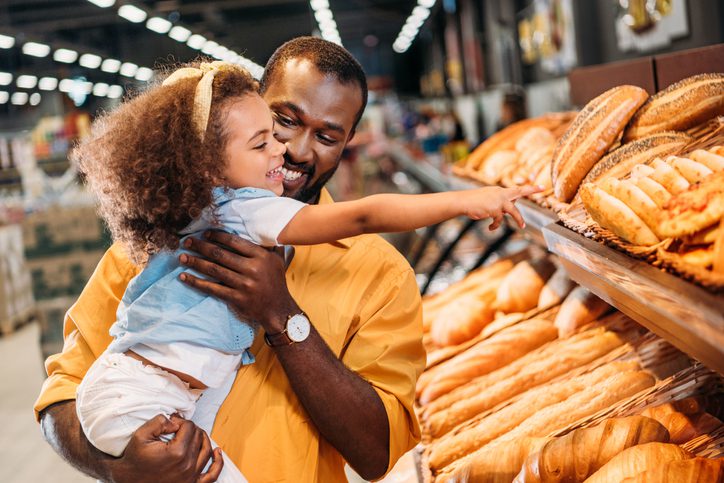
Image Credit: iStock
Much like when you’re selling your house, you always want to make sure that any scents a person notices are pleasant ones.
For grocery stores, this typically includes baking bread, roasting chicken, and the like – those things are likely going to get your stomach thinking about what’s for dinner.
6. Writing misleading sale stickers.

Image Credit: iStock
Those bright stickers that pique your interest about a good deal? Turns out they’re intentionally misleading.
For example, the price might be based on weight, not packaging, or is only for a certain number of items.
5. Increasing the size of your cart.
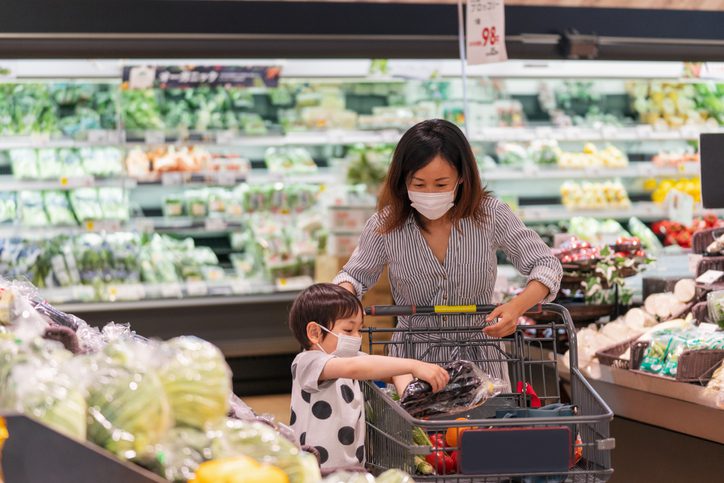
Image Credit: iStock
The whole reason shopping carts are a thing is to allow you to buy more at one time, and consultants have learned that doubling the size of the carts definitely means people will buy more.
40% more, according to some studies.
4. That bopping soundtrack.
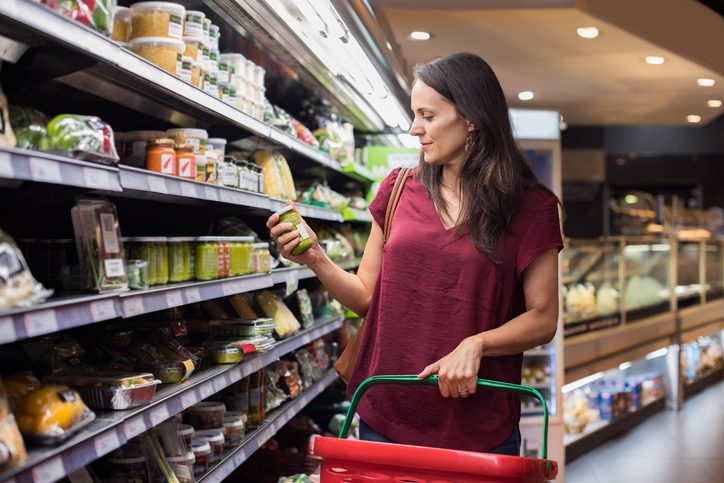
Image Credit: iStock
One of the things that makes you spend more money in the grocery store is just how much time you spend wandering the aisles.
The music is supposed to encourage a leisurely stroll, and sure, if you’re the target consumer – aka middle aged – you’re going to hear some of your favorite tunes in the process, too.
Sorry.
3. Putting the pretty produce up front.

Image Credit: iStock
Analysts believe that bright colors and fresh smells make us happy, and that putting those things up front get you in a great mood where you’re more likely to spend money.
Good visuals never hurt anyone, right?
2. If you live in a nice area, the prices are higher.

Image Credit: iStock
If you frequent a chain grocery store, chances are you believe the prices are the same across the board, but that’s not exactly true.
Like most businesses, grocery stores charge what they believe people will pay – so items in an affluent area will almost always cost more than ones that are located in stores just a few miles away.
1. Putting expensive stuff on the end-caps.

Image Credit: iStock
The items that are stacked on the ends of the aisles are very lucrative in general. The prominent placement both gets customers attention and makes them think there must be something special about them to earn the space.
That said, the items are rarely on sale and are often more expensive than generic but similar items down the aisles.
Also, manufacturers usually have to pay extra to have their items featured, so stores make money off end-caps that way, too.
I’m a little gobsmacked, y’all, though I’m not sure why.
Have you been coerced and didn’t even know it until it was too late? Share the story of how your realized in the comments!

